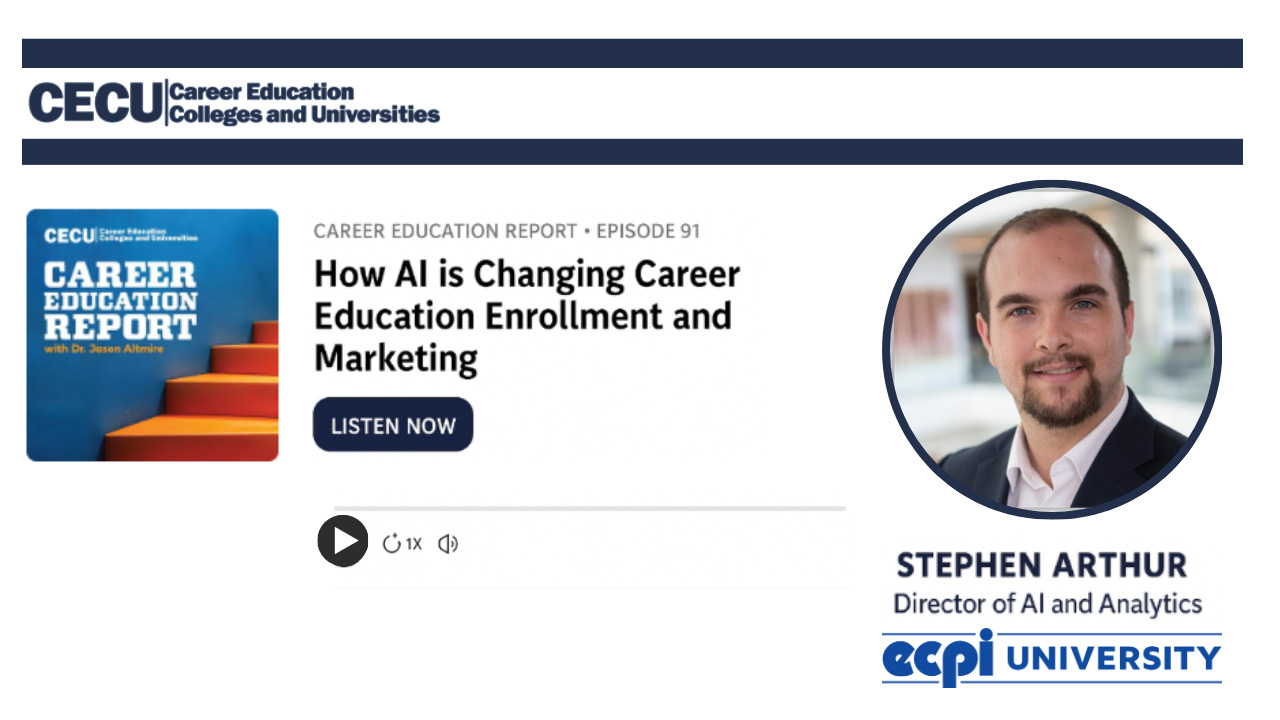
Artificial intelligence (AI) is already changing the landscape of higher education. From speeding up admissions to supporting students with career placement, AI is influencing key parts of the student experience.
ECPI University is helping lead this transformation. Stephen Arthur, ECPI's director of data analytics, recently co-chaired a task force of over 40 higher education experts. The group produced a best practices guide which shows how colleges and universities can use AI responsibly in marketing and enrollment.
Arthur joined Dana Hutton, chief marketing and enrollment officer at Southeastern College, and Dr. Jason Altmire, president and CEO of Career Education Colleges and Universities (CECU), on the Career Education Report podcast to discuss the guide and its impact.
Why Career Colleges Are Leading the Way
AI is advancing rapidly in higher education and requires careful attention. Arthur noted that marketing and enrollment demand particular care.
Used thoughtfully, AI can position colleges and universities as leaders in applying emerging technologies to benefit students.
By creating this guide, the task force aimed to help institutions adopt AI in ways that are appropriate and student-centered.
Hutton explained another reason for the project: helping colleges adapt to the pace of change. “We knew how to do the basic functions of ChatGPT,” she said, “but [changes] were coming out so rapidly."
How AI Is Improving the Student Experience.
In higher education, student success should always be a priority. AI use must similarly support that goal.
Admissions should open doors, not create obstacles. A smooth, transparent admissions experience ensures more prospective students can see a clear path to enrollment and opportunity. Institutions have a responsibility to make the process navigable and accessible.
Arthur also noted that AI has been shaping higher education indirectly for students for many years. Search platforms, for example, use AI to match individuals with schools that fit their interests, helping them discover options they may not have otherwise considered.
Now, colleges are able to apply these technologies directly to their own admissions and support processes.

